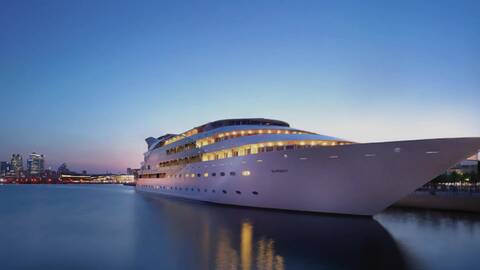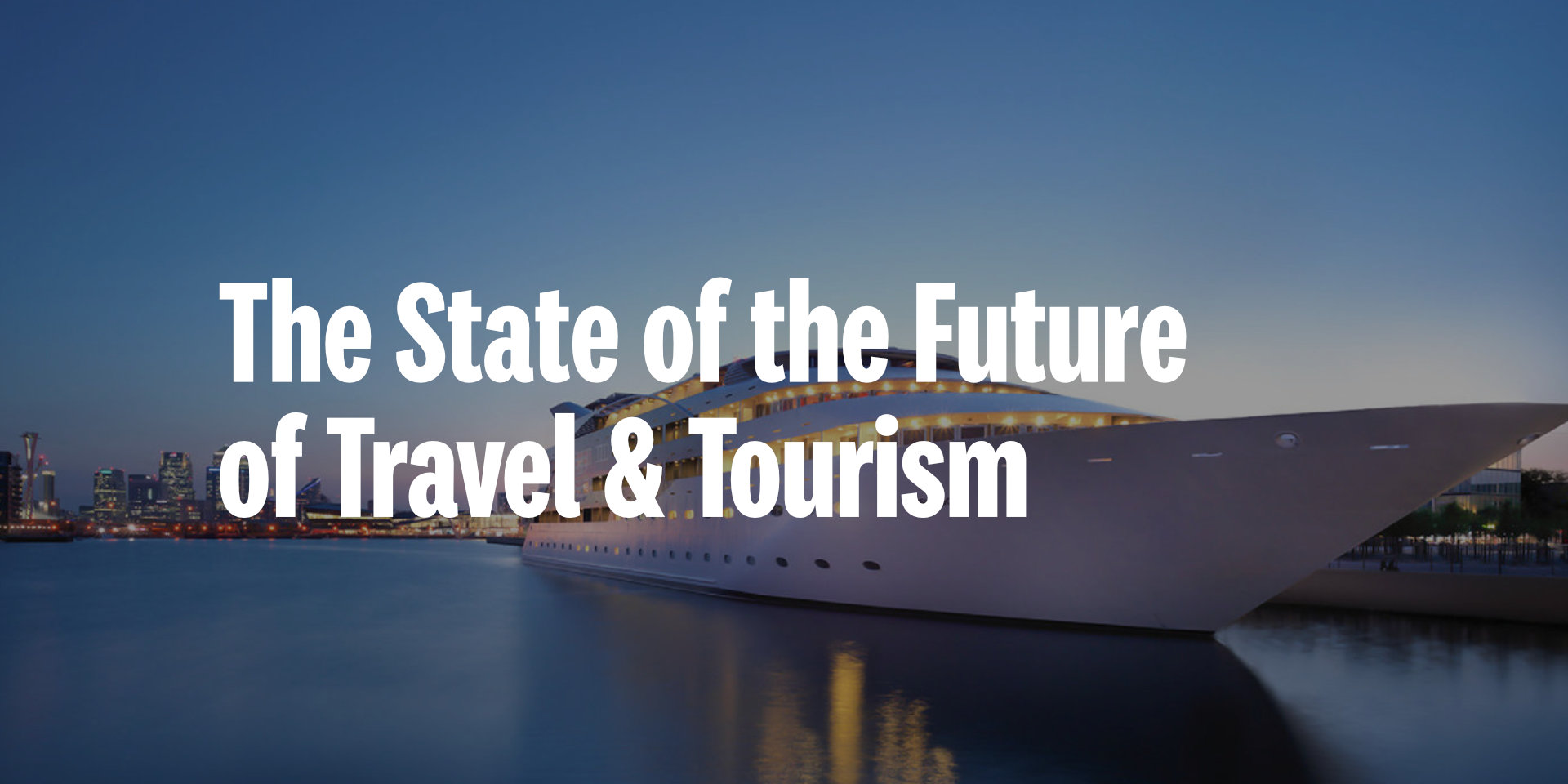- Dec 2, 2022
- --
The State of the Future of Travel & Tourism
Magnolia in action
Take 12 minutes and a coffee break to discover how Magnolia can elevate your digital experience.
At the recent “Future of Travel & Tourism” event, I had the pleasure of sitting down with Simon Calder (travel journalist and broadcaster) with the intent on understanding whether Travel and Tourism will get its wings back and continue to offer experiences for everyone.
As we go into a recession, bleak economic outcomes literally in front of our eyes on every digital screen and the impact of pandemics still looming over us, does this huge sector, that is so reliant on the movement of the general population, have a sustainable future?

2020 hit the industry extremely hard with over $4.5 trillion lost in GDP and 60 million jobs lost. 2021/22 saw the re-emergence of the industry, but the impact of the year before left the whole of the industry in turmoil - with Customer Experience the key battleground for any business within the sector, they were faced with a complete lack of staff to handle the huge demand that literally swept through like one giant Mexican wave - now commonly seen at most sports stadiums. It rippled across the globe as restrictions were lifted, country by country. The reactions through this period truly tell the story, or hint at it. People will still travel even if there is going to be turbulence to the experience, and as more and more restrictions were removed, more and more sought solace elsewhere.
There is legacy, and this needs looking at, as well as opportunity. So, what were the key themes that came from the discussion around, “The Future of Travel & Tourism” and what is behind Simon’s resounding confirmation that travel is back and here to stay?
Pent-Up Demand
On a recent excursion to Australia via Singapore, Simon noted many aspects that could be seen in past times as barriers or friction points to businesses maximizing the opportunity, but currently, the demand outweighs them:
3 x the price for an aircraft seat
Queue’s throughout the flight experience and through the airports
Hand luggage fights and checked baggage delays
At the other end, borders and security queues, taxi queues, and then check-in queues to hotels.
So the demand is there, but how best can Travel & Tourism learn and adapt for the better?
Travel & Tourism: How to Build a Digital Experience
Learn the key steps towards creating cutting-edge digital experiences for safety conscious travellers, passengers, and guests in the new travel landscape.
1. People will share their data
Big supermarkets in the UK saw an increase in online shopping of 30%*, the banking sector saw the same increase in sign-ups to online banking and so what happened? The key demographic were those more reticent to ‘download’, ‘share data’, ‘do something digital’, and so the vast majority were the silver surfers - almost forced to adopt technology and now, wouldn’t go back.
More and more interest is now being shared, which clearly offers the beneficiaries of this data huge opportunities to tune their messages to the right audience, as well as use technology such as notifications and mobile apps to offer greater levels of communications and rewards. We are not there yet, however at airports you will still see physical signs (sometimes cardboard) helping customer navigate their way, where surely now simple communications can be given ahead of time to support the flow or traffic.
One key point raised by Simon was the vast number of mobile applications that he has to now utilise, sharing the same data over and over again, but each one supports a different operator, location, loyalty program, etc. There must be an opportunity to change here, whether through collaboration or through shared data. Examples of this is where you now see Costa Coffee inside Next retail stores, at some petrol stations you now see Gregg’s, and Starbucks and Subway within the petrol stations itself. There is now an app that brings together ALL the loyalty cards across retail (whether a physical card or app) into one, so you don’t carry a large number of plastic cards anymore - in fact, helps reduce the consumption of plastic!
This is also true of traveling - when on a cruise, you will get everything you need onboard and for excursions - but most frequently people have to travel to the ports to board the ships, and there lieth another opportunity to bring together local tourism to help customers maximize the trip. There must be a huge amount of opportunity right there to make the customer sit at the heart of the trip and not the tour operator. Another example was a flight to Morocco, and that was the end goal of the airline - no mention of Marrakech or excursions. This brings a whole new question to the table raised by Simon regarding the impact of the host community (see sustainability below)
* Based on statistics shared by Magnolia customers.
2. The **2.4 package holiday is fast becoming the outlier rather than the norm
Another key trend is the changing face of the consumer. Time with friends and family has become a critical part of vacations no matter where the destination. Larger villas, interconnecting rooms, multiplexes are all seeing up turns in demand and pets also. Consumers aren’t just wanting to discover what’s near such as shops, beaches, and pools - there is more information being sought on medical facilities, alternative nutrition, and health & leisure.
The types of holidays are changing too; multiple destinations, travel experiences between those destinations like train journeys, and unique or bespoke accommodations (treehouses, glamping, Texan rangers, Greek sailing, Cypriot yoga hostels, or the Australian outback). The demand for the bucket list is huge, and so cruises to Norway, Iceland pods, and Swedish pole destinations offer a very different view of the world. Where hobbies were something done only at home, now more and more destinations bring together the blend of holidays + sports, dance, cooking, wellbeing, etc.
Bleisure too is now a real trend - with working from home and digital technology supportive of the business community, where you work is now up for debate, and so combining both business and leisure offers far more flexibility and possibly even cheaper alternatives to the otherwise expensive school holiday price hikes. Digital nomads are remote workers that explore whilst working from home - the difference is that ‘home’ is not the same place, but the work effort is. The above, points towards data and information which is accessible as people browse, connecting the bucket list items with the ability to travel, seek the comfort of the holiday attributes that matter to you, as opposed to the common filters in place now and also how to go from one destination to another.
3. Sustainability
Simon mentioned the Boeing 747 graveyard at Mojave Air and Space Port - essentially in a desert. Air travel has had to evolve extremely quickly - rising costs of fuel and the understanding of the impact carbon fuels have on the environment. So, as the old is quickly scrapped for the new, ways to recoup the costs are very evident, whether it’s a bag, seat nearer the front, or a meal; the airline industry has changed.
But Simon’s main point was around those communities that can be impacted by climate change as well as those that support the Travel industry - they are most often the same. Those local communities that are a huge part of some of the most beautiful beach locations may not exist in years to come as water levels continue to rise. Additionally, as destinations change, some are left behind and don’t have the money or the infrastructure to adapt, and so both the industry and the traveling community have a part to play in sustainability. In the same sense way democratization which attempted to offer holidays to everyone, and whilst margins remain the holy grail, cash flow, and adoption can be more broadly felt by thinking of those less fortunate but desperate to see the world too.

A Summary
Travel is here to stay, and it's not so much the industry that is putting the plight on the natural world, it is the huge population that about to hit 8 billion and growing at an alarming rate.
Offline still matters - the old Thomas Cook may not have lasted, but Trailfinders, Hays Travel and many others still offer the human touch where expertise and knowledge far outweigh the trawling of many websites for often the same information. Fast-tracking the noise where a human may have first-hand experience tells you about the places to go, see eat and drink, plus how to combine destinations, offer a far more trusted outcome for those more cautious on risk.
Make it easy - UBER is one of the best business models as it is trusted and very easy to use. Bringing solutions, data, and businesses together to make navigation easier will be a key area to be competitive in.
Footprint - being more aware and demonstrating how you are supporting climate change will resonate now with more and more.
Values will be important, as well as value which will continue to drive loyalty within the sector.
Simon’s parting words - “oh, the Joy of Travel - its the celebration of humanity”.
Follow Simon Calder on Twitter or at simoncalder.co.uk.
Video of event highlights










